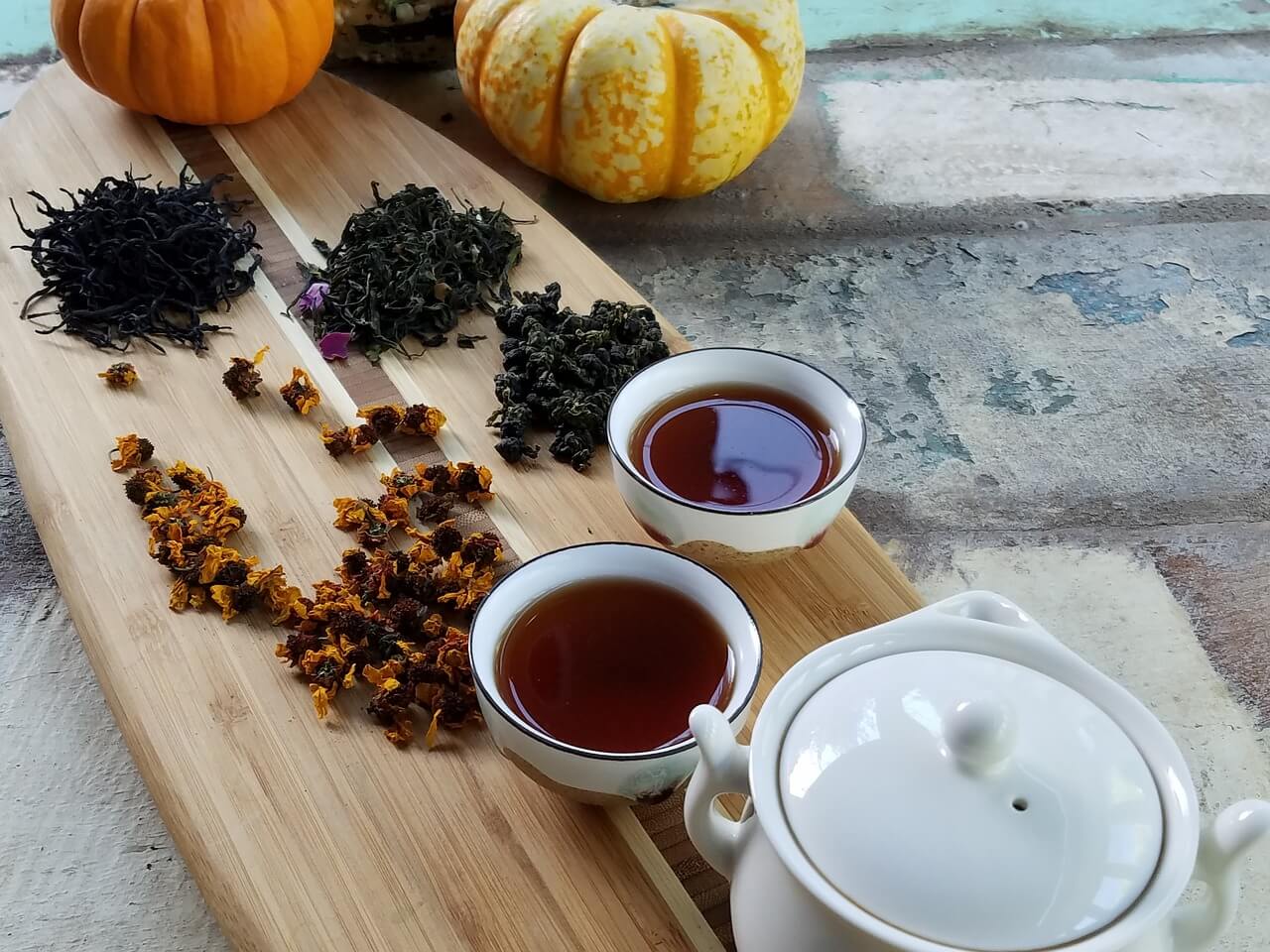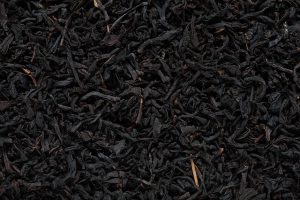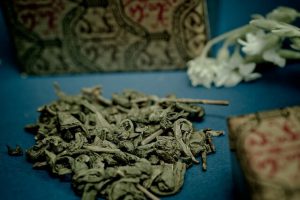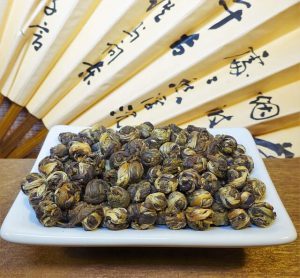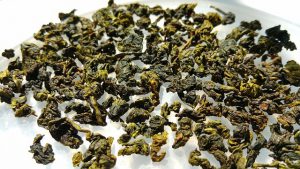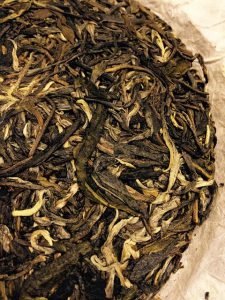Tea has now become much more than just a beverage. For so many people it is something they can’t do fine without, and in this article, we are going to deal with the different types of teas, highlighting the health benefits and the differences among them.
Tea originates from China and in time has become a worldwide spread beverage. Even though it might seem something new to some people, tea is a really ancient beverage. The first evidence of its existence dates back to 141 B.C., under the rule of emperor Liu Qi.
What is tea?
When we say the word tea, we often refer to a broad spectrum of beverages: green tea, black tea, herbal, fruit and spice teas. Yet over the last years, tea consumers have become more and more aware, and now they can tell the different types of tea from infusions and herbal or spice teas.
When talking about tea, we refer to Camelia sinensis infusions, with its different varieties depending on the leaf drying method – black tea, white tea, Oolong tea, green tea or Pu’erh tea.
Different types of teas – differences
Whatever your favorite type of tea is (green, white or black), it still is just one plant – Camellia sinensis. The only difference is how the leaves are dried and prepared.
Black tea
In order to obtain this type of tea Camellia sinensis leaves get harvested and then dried for 8-24 hours. The leaves get then rolled up, and during this process the leaf surface cracks, letting the enzymes get in touch with oxygen, thus triggering the fermentation process. This type of tea, actually, undergoes complete oxidation.
Among black tea varieties we find: Darjeeling tea (grown at the bottom Himalaya), Assam tea (grown in North-East India) and Rose Pouchong tea (a delicious mix made from tea leaves mixed with rose petals).
Green tea
In this case Camellia Sinensis leaves don’t undergo any oxidation process. In order to prevent enzymes from getting in touch with oxygen, the leaves get dried in the sun for a couple of hours immediately after they are harvested. The tea leaves are then steamed (100 degrees) for at least 30 seconds. The next stage is drying, which makes water evaporate and helps fold and roll up leaves as wished.
Among green tea varieties we find: Gun Powder tea (each leaf is rolled into a small round pellet and the tea has a strong pungent taste), Lung Ching (“the dragon source”, with a delicate taste – it is regarded as the finest green tea variety), Sencha tea (this tea has a fresh and a bit bitter taste – the leaves are harvested and steamed in early spring and then rolled into fine needles), Bancha tea (has a browner color – the leaves are larger and are usually harvested in the summertime).
White tea
This tea is exclusively produced in China and is regarded as the finest type of tea. It is made up of fresh leaves and Camellia sinensis buds, which get dried and steamed to avoid oxidation. It is the most expensive type of tea.
Oolong tea
In this case tea leaves get withered shortly under the sun before undergoing a brief oxidation and curling process. This is a semi-fermented type of tea, halfway between green and black tea.
Pu’erh tea
This type of tea is less known, though it is regarded as one of the finest. It is named after the province where its leaves are harvested, which then undergo a peculiar process – obtaining at first a green tea, which gets further fermented for a long time.
Health benefits of different types of teas
Tea is loaded with antioxidants, flavonoids, polyphenols, tannins and other compounds essential to our overall health and wellbeing.
The main health benefits of the tea are:
- It increases sugar and fat metabolism and helps keep in check bad cholesterol and triglycerides. That’s why it may be helpful either in weight loss diets, or to reduce the cardiovascular disease risk.
- It is helpful in preventing stroke, glaucoma, and protecting the skin from UV radiations, thanks to Epigallocatechin gallate (EGCG) – an antioxidant to be found mainly in green tea.
- Boosts the immune system.
- Improves digestion.
- Helpful in balancing blood pressure.
- Lowers cancer risk – breast, colon, ovaries (Oolong tea is especially beneficial), prostate.
- Helpful in preventing cellular aging, as it battles free radicals.
- Helpful in boosting physical and mental energy, thanks to caffeine (black tea being loaded with larger amounts of caffeine).
- Protects teeth from decay (black tea, which is rich in fluorine).
Tea contraindications and side effects:
- Because of its caffeine content, tea is to be consumed carefully in pregnancy and during breast-feeding (no more than 2 cups a day).
- You shouldn’t drink tea in the evening, as it may cause insomnia.
- Tea might interact with a few medications and supplements (for instance, drinking tea prevents iron and calcium from being properly absorbed – this is the reason why it is recommended to drink tea between meals).
If taken in large amounts or by people who are sensitive to theine, tea might cause the following side effects:
- it might make heartbeat irregular;
- it might interfere with blood coagulation;
- it might trigger or worsen anxiety symptoms;
- it might cause hypoglycaemia;
- it might cause diarrhea or make IBS (irritable bowel syndrome) worse.
- tea might cause a rise in blood pressure in people who already suffer from hypertension.
Except in a few cases and if taken moderately, tea is a very healthy beverage, allowing us to warm up in the winter and cool down in the summertime, keeping us youthful, healthy and energetic. Generally, as it is the same plant, the different types of teas have similar health benefits, which may vary according to the type of leaf processing. For instance, green tea varieties are loaded with more antioxidants than fermented tea (such as black tea or Oolong tea).
There is no better or worse tea; just choose the taste you like the most and drink it calmly, trying to focus on positive and pleasant thoughts, to get the best benefits out of this precious beverage.
Thank you for reading and if you find this article useful, please comment below and share it so other people can benefit from it as well.

